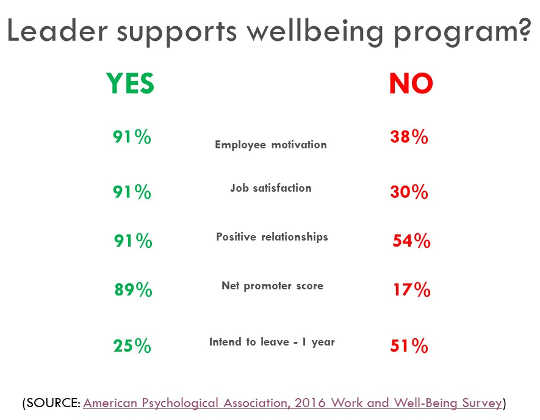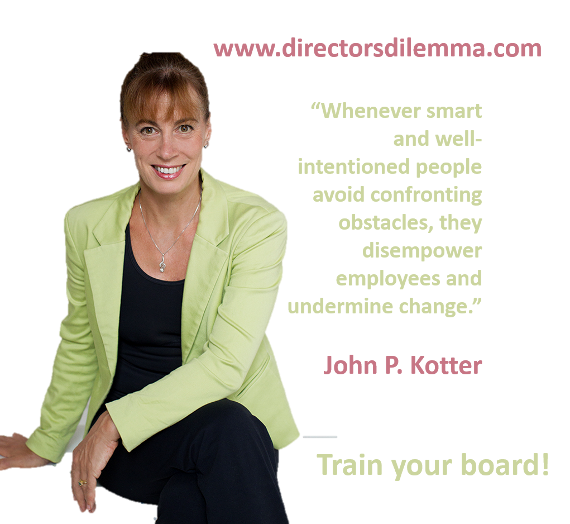|
|
|
|
|
|
|
|
|
Dear reader,
Welcome to the September 2018 edition of The Director’s Dilemma.
To read this email in a browser, go to www.mclellan.com.au/newsletter.html and click on 'read the latest issue'.
This month our case study protagonist is considering a course of action that risks crossing the lines from governance to management and from work to personal. I hope you enjoy thinking about the governance and strategic implications of the latest dilemma:
 Damian chairs a government board. The company has been through some forced changes when a sector reorganisation first merged it with a department, then demerged it as a smaller entity with essential services provided by the department, and finally ‘reinvigorated’ it by establishing new enabling legislation, an independent board and the in-house resources to support its business
activities. Damian chairs a government board. The company has been through some forced changes when a sector reorganisation first merged it with a department, then demerged it as a smaller entity with essential services provided by the department, and finally ‘reinvigorated’ it by establishing new enabling legislation, an independent board and the in-house resources to support its business
activities.
Moral is very low. When one of the directors quipped “floggings will continue until morale improves” one of the senior executives replied “We’re used to flogging”.
For the first year Damian has concentrated on establishing good governance processes and sound risk management. He has recruited a new CEO who is enthusiastic about the mission and baffled at the laissez-faire attitude of the workforce. Two months ago, the company participated in a multi-entity survey of workplace health. Damian’s organisation rated very poorly; it was worst of all companies surveyed for employee stress, engagement and overall self-assessed employee health. It was in the bottom three on all other measures. Damian and the CEO are determined to improve this; they believe that failing to act would be callous and negligent. They also want to improve productivity, which is below normal government sector
standards.
Other senior executives and some board members have reservations about the ability of the organisation to act on the health survey findings. They say that it is up to the employees to take responsibility for their own health and that employee’s individual health decisions are not something that the company should interfere with. Damian agrees that they must be careful not to blame the staff for feeling so bad but is committed to helping improve.
What can he, and his board, do?
|
|
|
|
Graeme's Answer
 Damian and the CEO would be unwise to ignore rising levels of stress. PWC have identified mental ill health as today’s biggest cause of lost productivity, and the CSIRO have just nominated rising work stress as a Top 6 megatrend for the next 20 years. Damian and the CEO would be unwise to ignore rising levels of stress. PWC have identified mental ill health as today’s biggest cause of lost productivity, and the CSIRO have just nominated rising work stress as a Top 6 megatrend for the next 20 years.
Stressed employees can't adapt quickly to change, work well with colleagues, or deliver great customer service. Any board that ignores rising stress is ill equipped to improve productivity. They also risk severe legal repercussions.
Work Health Safety (WHS) laws are strict liability laws. All businesses must ensure, as far as reasonably practicable, the health and safety of its workers. In white collar environments, the most prominent health and safety risk faced by a business is psychological.
Any director or senior officer of a business can be personally liable for a breach of the WHS Act. If they focus on physical risks to the exclusion of a psychological risk, they do so at their own peril as officers can be jailed for up to 5 years in case of a breach.
So, what should they do? In my experience, the organisations that produce the best wellbeing results do 3 things:
1. They link wellbeing initiatives to their vision and values
2. Senior leaders walk the talk (see image below)
3. They focus on a maximum of 3 wellbeing areas based on their research

In a recent survey, 385 people nominated their top 5 work stress busters:
1. Exercising more 84%
2. Taking breaks during the day 78%
3. Speaking to my manager or a colleague 63%
4. Taking days off work 60%
5. Decreasing work hours 50%.
I’m yet to encounter an effective wellbeing program that doesn’t have increased employee exercise as one of its focus areas.
Graeme Cowan is a Workplace Mental Health Authority, and Board Director of R U OK?
He is based in Sydney, Australia.
|
|
|
|
Julie's Answer
 Damian needs to respond with tact and empathy; this is an emotive and complex issue. Damian needs to respond with tact and empathy; this is an emotive and complex issue.
It is a business issue. The Board must ensure a safe and healthy workplace. That includes mental health which deteriorates under stress and insecurity. It reduces productivity; people who feel secure and well are more productive than people who don’t.
How the Board approach the issue is important; the wrong approach could backfire. The Board must not ask staff to trust them. The Board cannot prevent future changes. Machinery of Government is often revised. They also must not ask or tell the staff to feel better; asking someone who is depressed to cheer up is like asking someone with a broken leg to get running – ineffective!
Damian needs to look at the strategic plan and the Human Resources development plan. Stress will reduce as staff start to feel valued in their roles. Don’t tell staff you value them; show it by investing in training and wellbeing.
Next Damian can prompt the CEO to look at the performance appraisal process and incorporate forward looking skill development. Staff need to feel that the organisation is committed to helping them face the future.
Then Damian needs to look at how the Board monitors health in the workplace. If they never receive reports or make inquiries staff will assume they are not interested. They should have wellbeing as a regular item on their agenda until it is no longer a concern.
Finally, Damian’s board must step up to their role as models of successful behaviour. Few directors truly understand the impact that their behaviours have on the behaviours of others. Choose healthy catering options and build exercise breaks into any full-day meetings. Let staff see that their leaders invest in and value health.
Julie Garland McLellan is a non-executive director and board consultant based in Sydney, Australia. She would not normally be seen in her gym gear in a serious professional publication and has selected this photo to demonstrate that she really does practice what she preaches and invest in health as well as safety and competence!
|
|
|
|
Troy's Answer
 The challenge of employee stress, low rates of engagement and poor employee health faced by Damien, his CEO and board is now a common challenge faced by many organisations across the world. The first step has been taken by the board in being part of a process to identify where the organisations’ health and wellbeing issues lie. The challenge of employee stress, low rates of engagement and poor employee health faced by Damien, his CEO and board is now a common challenge faced by many organisations across the world. The first step has been taken by the board in being part of a process to identify where the organisations’ health and wellbeing issues lie.
The next, more difficult, step is to develop a strategy to create a multi-faceted solution that not only improves employee wellbeing but also fits a business case that allows Damien and his CEO to convince the board that they need to be part of the solution towards improving employee wellbeing.
To build this business case, Damien and his CEO need to access the growing body of research that links employee wellbeing to productivity. For example, a recent report by Safe Work Australia found that psychological distress amongst employees is costing organisations approximately $1 billion every year. This same report also highlighted that employees facing psychological distress took four times as many sick days per month, underscoring the impact of a stressful work environment on productivity. Clearly employers who act on employee health have a lot to gain. As research consistently proves, good health equals good business.
Once the decision is made for the organisation to be part of the solution, it requires a strategic focus and employer commitment to allow the solution to be effective. But once in place, it can deliver substantial benefits that will not only boost productivity and profitability but will make Damien’s organisation stand out from the crowd.
Troy Morgan is Managing Director at Willows Health & Lifestyle Centre and Director of Wellbeing Strategy at Wellbeing Technology Platform Company Springday. He is based in Sydney, Australia.
|
|
|
|
Georgie's Answer
 Change is unavoidable; the level of impact from constant change does not have to be. Clearly at Damian's organisation the change frequency and magnitude has been a driver to very poor employee stress, engagement and health scores. Change is unavoidable; the level of impact from constant change does not have to be. Clearly at Damian's organisation the change frequency and magnitude has been a driver to very poor employee stress, engagement and health scores.
We need to realise that change itself is a stressor. Through both functional components of implementing change, and psychological impacts of change. Stress has both psychological, and physical manifestations such as: anxiety, high blood pressure, chronic endocrine, gastrointestinal and nervous system disorders.
To fall back on a belief that employees are responsible to manage their own personal health ignores the role of constant workplace change on employee stressors - and resulting whole life reduction in health and wellbeing.
From my two decades of experience in this space, I would encourage Damian and his board to understand that innovative transformational leaders now start with employee wellbeing as a foundational efficiency and sustainability driver. Our clients such as Accenture, Vodafone NZ, PwC and Virgin Australia are leading by example.
Organisations ARE people. Processes ARE people. Performance IS people.
To research it, Damian would find the effect of change and stress to whole life wellbeing and resulting workplace efficiency. Whole life comes before workplace efficiency in this statement, as the former directly impacts the latter. And by this we define wellbeing under five pillars, physical, social, emotional, financial and career wellbeing and all five pillars need to come together for you to be a thriving individual.
Damian would also find both disengagement and presenteeism can cost up to 30% of an employee's annual salary, while wellbeing, engagement and prevention initiatives can land between 0.1% and 1% of an annual salary.
Armed with this knowledge, the board needs to reframe their point of view, if not around employee wellbeing in and of itself - a preferred modern view of employee value, then a least pick up the fiscal impact to firstly understand, then advocate for, a proactive and meaningful wellbeing agenda.
A final point, most organisations are not yet geared to implement effective welling programs, and neither should they, it not their core business. They should seek professional help to implement validated engagement, stress management and whole life wellbeing initiatives with prevention being THE most ethical, impactful and efficient outcome.
Georgie Drury is CEO & founder at Springday. She is based in Sydney Australia.
|
|
|
|
Book review - All Above Board
With a foreword by the Hon Nick Greiner AC FAICD (Life), eight chapters and 46 case studies, All Above Board, 2nd Edition is the must-have public sector handbook for emerging and aspiring directors, and a potent refresher for experienced board members.
All Above Board, 2nd Edition is your guide to public sector governance and includes sections on:
-
how governments work with government boards;
-
key differences between private and public sector boards;
-
ethics and conflicts;
-
risk management and strategic planning.
Available through The Australian Institute of Company Directors
What's New - In August
Well; August was a great month!
I started with an inspiring talk at my mastermind group about innovation and how the board can foster creativity. I do recommend meeting with peers to talk about issues as it is amazing how much you can learn and how energised you feel afterwards.
Then I joined Kylie Hammond to host a dilemma over a very enjoyable boardroom lunch. This proved to be a very exciting and interactive session with several contributions that advanced my understanding. I find that hosting live dilemmas is one of the most enjoyable ways for boards to learn. Call me if you would like to arrange one for your board.
My own board meetings saw me fly to Canberra and Wellington NSW, both of which are great destinations. A trip underground was a highlight of my listed coal mining board’s events for the month. There is no substitute for getting out and seeing the operations; it gives far richer understanding of the culture and I have always found that the workers love a visit from a director.
Another highlight was the three day ‘Platform Professionals’ retreat at Salt in Kingscliff. It is important to keep learning and developing my presentation skills and commercial skills as well as my governance skills and I always learn something valuable when I meet up with my fellow CSPs at Professional Speakers.
I then proved that I have zero ability to manage my own diary by finishing the month with a week that included four board meetings and an audit committee meeting plus two interstate flights whilst finalising the newsletter and meeting a publication deadline for my next book!
I am always keen to work more and will be delighted to hear from you if you would like to arrange a board strategy workshop, education session, or board performance review!
Coming up - On 12 September I will be presenting a workshop in Sydney for HR leaders. This will introduce the concepts in my Presenting To Boards book using case studies and examples that are specifically related to HR. To book your place go to https://www.ticketebo.com.au/alto-partners/making-an-impact-with-the-board.html
Inspirational quote for September - This month my favourite quote is:

A note on names - A few readers have asked me where I find the names for the protagonists in each case study; I ‘borrow’ them from people I meet or things that I read. In Greek the meaning of the name Damian is “to tame”, and our version of the name derives from the Greek name Damianas, 'one who tames or subdues.' A Belgian priest Father Damien gave his life helping the Hawaiian lepers of Molokai. 3rd Century St. Damian is patron of physicians. Our Damian will need to draw upon his compassion as well as his passion to push through and find a solution to this very important dilemma. He will need the compassion of the saint and the skill of the physician as he ‘tames’ his board and builds their support for this difficult but necessary course of action.
This newsletter - If you have any ideas for improving the newsletter please let me know. If you are reading a forwarded copy please visit my website and sign up for your own subscription.
Suggestions for dilemmas - Thank you to all the readers who have suggested dilemmas. They are greatly appreciated. I will answer them all eventually. I could not write this newsletter without your help and without the generous help of all the experts who respond each month to the case studies.
Be a contributor - If you would like to attempt a response to the dilemmas for publication you will be most welcome. Simply reply to this email and let me know.
Let's connect - I use LinkedIn to share information about boards and directorship with my friends and acquaintances. If you use LinkedIn and we are not yet connected I will welcome a connection from you. You can find me at linkedin.com/in/juliegarlandmclellan.
Let me help you - If you would like me to speak to or train your board, staff, audience and/or group please contact me at julie@mclellan.com.au.
Farewell until the next issue (due 1 October 2018). I look forward to greeting you again then. In the interim I hope you will enjoy health, happiness and hard work.
Enjoy governing your corporations; we are privileged to do what we do!
Best regards,
Julie
Photo Credits:
Personal images in this newsletter are provided courtesy of the contributors, course attendees and conference participants.
Main Photo by mentatdgt from Pexels.
Disclaimer:
The opinions expressed above are general in nature and are designed to help you to develop your judgement as a director. They are not a definitive legal ruling and do not constitute legal advice. Names and some circumstances in the case study have been changed to ensure anonymity. Contributors to this newsletter comment in the context of their own jurisdiction; readers should check their local laws and regulations as they may be very different.
Privacy:
I am privileged to have your contact details and keep them as safely as possible. I will alert you if they are ever accessed by any unauthorised person (the technical staff at ayuda help with publishing and issuing the Director's Dilemma and have access so they can send the newsletters to you). I do not sell your details to anyone; they are kept only for the intended purpose - sending you this newsletter and helping to build the judgement of company directors by providing a safe way to consider potential responses to real life events.
|
|
|
|
|
|
|
|
|
|
|
|
|
 Damian chairs a government board. The company has been through some forced changes when a sector reorganisation first merged it with a department, then demerged it as a smaller entity with essential services provided by the department, and finally ‘reinvigorated’ it by establishing new enabling legislation, an independent board and the in-house resources to support its business
activities.
Damian chairs a government board. The company has been through some forced changes when a sector reorganisation first merged it with a department, then demerged it as a smaller entity with essential services provided by the department, and finally ‘reinvigorated’ it by establishing new enabling legislation, an independent board and the in-house resources to support its business
activities.
 Damian and the CEO would be unwise to ignore rising levels of stress. PWC have identified mental ill health as today’s biggest cause of lost productivity, and the CSIRO have just nominated rising work stress as a Top 6 megatrend for the next 20 years.
Damian and the CEO would be unwise to ignore rising levels of stress. PWC have identified mental ill health as today’s biggest cause of lost productivity, and the CSIRO have just nominated rising work stress as a Top 6 megatrend for the next 20 years.
 Damian needs to respond with tact and empathy; this is an emotive and complex issue.
Damian needs to respond with tact and empathy; this is an emotive and complex issue. The challenge of employee stress, low rates of engagement and poor employee health faced by Damien, his CEO and board is now a common challenge faced by many organisations across the world. The first step has been taken by the board in being part of a process to identify where the organisations’ health and wellbeing issues lie.
The challenge of employee stress, low rates of engagement and poor employee health faced by Damien, his CEO and board is now a common challenge faced by many organisations across the world. The first step has been taken by the board in being part of a process to identify where the organisations’ health and wellbeing issues lie. Change is unavoidable; the level of impact from constant change does not have to be. Clearly at Damian's organisation the change frequency and magnitude has been a driver to very poor employee stress, engagement and health scores.
Change is unavoidable; the level of impact from constant change does not have to be. Clearly at Damian's organisation the change frequency and magnitude has been a driver to very poor employee stress, engagement and health scores.

